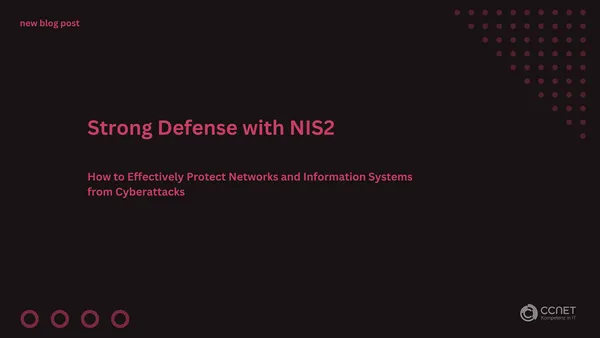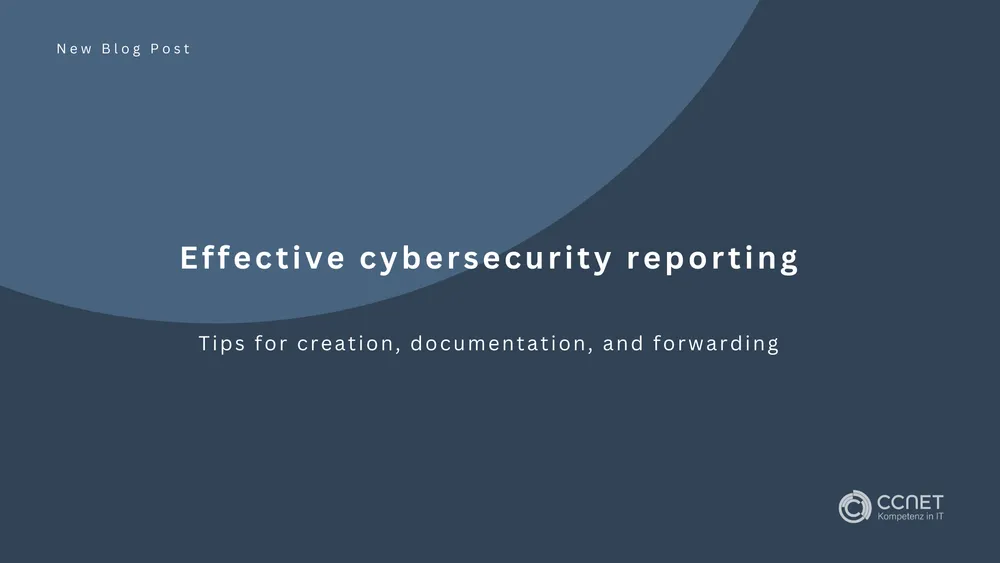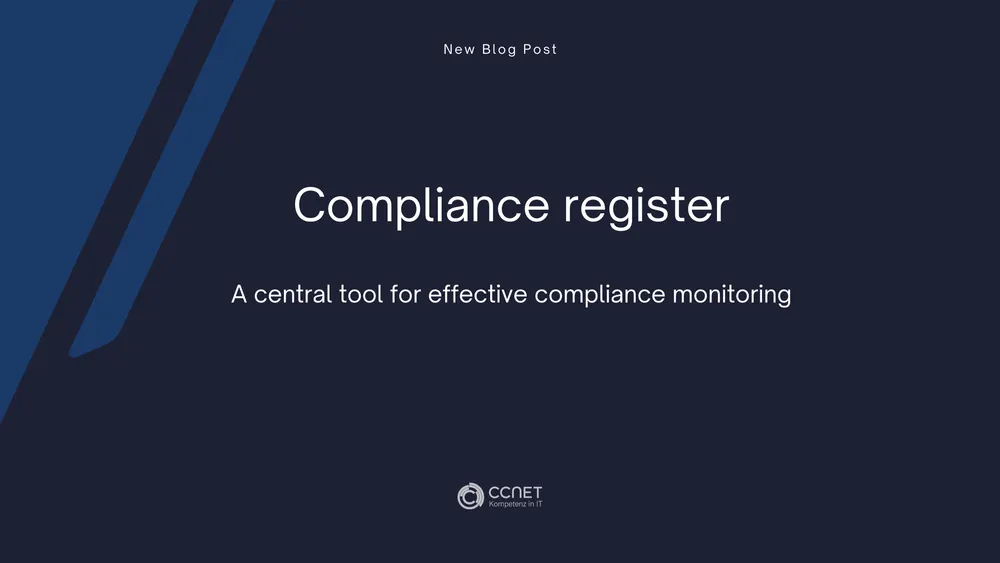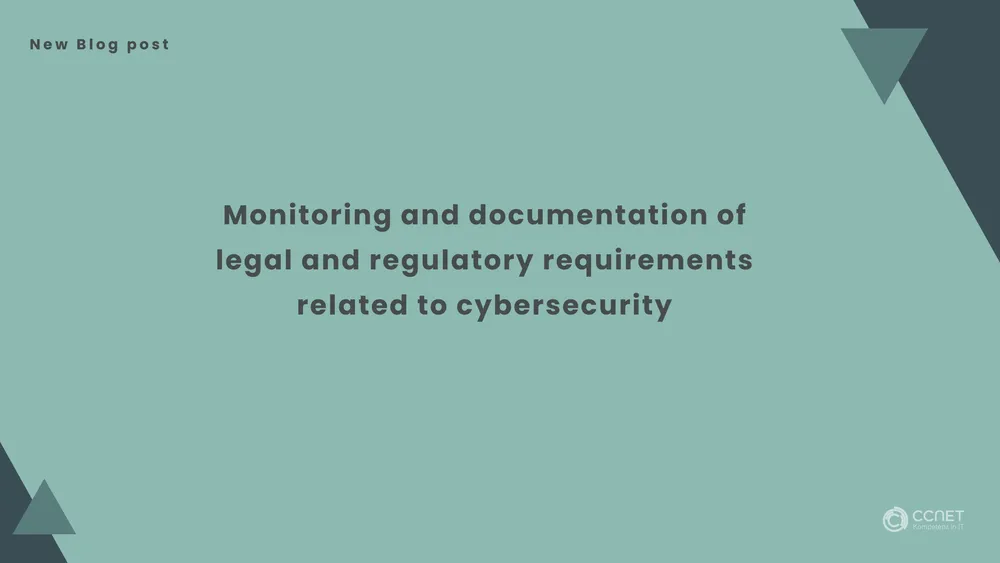
CCNet
Jan 8, 2025 • 3 min read

Strong Defense with NIS2: How to Effectively Protect Networks and Information Systems from Cyberattacks
Protecting networks and information systems is a central component of any cybersecurity strategy. With a multilayered security architecture, a company can effectively protect its IT infrastructure from cyberattacks and meet the requirements of the NIS2 Directive. This approach combines various technologies and processes to ensure comprehensive and proactive defense against both external and internal threats.
What You Need: A Holistic Security Architecture
A holistic approach to network security includes implementing various technical measures such as firewalls, Intrusion Detection Systems (IDS), Intrusion Prevention Systems (IPS), and Next-Generation Firewalls (NGFW). It is not only important to implement these components but also to regularly update, review, and monitor them.
How to Implement It: A Structured Process for Protecting Networks and Information Systems
-
Process Goal: Effective Protection Through Multilayered Security Measures
- Objective: Protect the company’s networks and information systems with a multilayered security architecture. The use of advanced security mechanisms ensures that the IT infrastructure is effectively protected against cyberattacks.
-
Process Scope: Comprehensive Coverage of All Systems
- Scope: The process covers all network and information systems, including internal networks, external connections, cloud services, and all systems that process or store sensitive data.
-
Components of the Security Architecture
- Firewalls: They form the first line of defense against unauthorized access from both inside and outside.
- Intrusion Detection System (IDS): Monitors data traffic for suspicious activities and attacks.
- Intrusion Prevention System (IPS): Complements the IDS by actively blocking detected threats.
- Next-Generation Firewall (NGFW): Extends traditional firewall functions with additional protection mechanisms such as application control and advanced threat prevention.
-
Process Steps: From Implementation to Continuous Monitoring
-
4.1. Implementation of the Security Architecture
- Responsible: IT Security Officer and IT Team
- Activity: Set up a multilayered security architecture by installing and configuring firewalls, IDS/IPS, and NGFW. All relevant network segments and systems are included.
-
4.2. Regular Updates of Security Solutions
- Responsible: IT Team
- Activity: Regular updates of security solutions to ward off current threats. This includes software patches, firmware updates, and signature database updates.
-
4.3. Configuration Review
- Responsible: IT Security Officer
- Activity: Monthly review and adjustment of the configurations of firewalls, IDS/IPS, and NGFW to ensure they meet current security policies and threat scenarios.
-
4.4. Monitoring and Surveillance
- Responsible: IT Security Officer and IT Team
- Activity: Continuous monitoring of networks and information systems using IDS and NGFW. Suspicious activities are detected, analyzed, and logged in real time.
-
4.5. Incident Response
- Responsible: IT Security Officer
- Activity: In the event of a security incident, a predefined incident response protocol is activated, covering the identification, containment, mitigation of the threat, and restoration of operations.
-
4.6. IT Team Training
- Responsible: IT Security Officer
- Activity: Regular training for the IT team on current threats, new security solutions, and best practices in network security. Training on the effective handling of the security architecture is also included.
-
4.7. Documentation and Reporting
- Responsible: IT Security Officer
- Activity: All actions, incidents, and changes in the security architecture are documented. Monthly reports on the security status and relevant developments are forwarded to management and stakeholders.
-
-
Roles and Responsibilities: Clearly Defined Responsibilities
- IT Security Officer: Responsible for planning, monitoring, documentation, and coordination of security measures, as well as incident response.
- IT Team: Responsible for implementing, maintaining, and monitoring security solutions, and conducting regular updates.
- Management: Oversees the process and provides the necessary resources.
-
Reporting: Transparency and Continuous Improvement
- Monthly Reports: The IT Security Officer creates monthly reports on the status of network security. These reports contain analyses of monitoring data and recommendations for further optimization of the security architecture.
-
Continuous Improvement: Adapting to New Threats
- Activity: The process for ensuring network security is regularly reviewed and adjusted to meet current threats and technological developments. Insights from monitoring and incident response are continuously incorporated into the optimization of security measures.
Advantages of a Multilayered Security Architecture
- Proactive Protection: A multilayered security architecture provides comprehensive protection through multiple layers of defense.
- Quick Response to Threats: Continuous monitoring and clear incident response processes enable rapid detection and mitigation of attacks.
- Up-to-Date Security Measures: Regular updates and configuration reviews ensure that the security architecture is always up to date.
Conclusion: Effective Defense Through Proactive Measures
Through a structured and multilayered security architecture, companies can effectively protect their networks and information systems from cyberattacks. A combination of firewalls, IDS/IPS, and NGFW ensures comprehensive protection, which remains up-to-date and effective through regular updates, monitoring, and incident response – in compliance with the requirements of the NIS2 Directive. A strong cybersecurity strategy requires not only the right technical solutions but also clear processes and continuous improvement.


